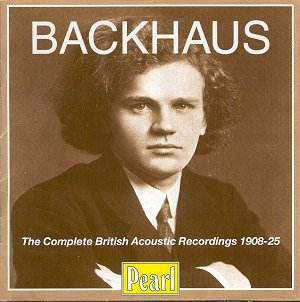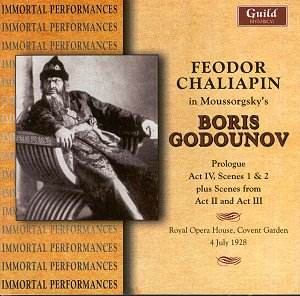 Composer: Wilhelm Backhaus
Composer: Wilhelm Backhaus
Works: Complete British Acoustic Recordings 1908-25
Performers: Wilhelm Backhaus, piano
Recording: Various sessions from 1908 to 1928
Label: Pearl Gems 0102 [2 CDs: 148’26]
Wilhelm Backhaus, a titan of the keyboard, is often remembered for his commanding interpretations of the Austro-German repertoire, particularly Brahms and Beethoven. However, this collection of his early British acoustic recordings from 1908 to 1925 reveals a more nuanced artist, one whose technical prowess and imaginative musicality were already in bloom before he became the stoic figure of his later years. This compilation, spanning nearly two decades of recorded history, showcases not only his virtuosity but also his engagement with a diverse range of composers, revealing both the historical context of early 20th-century recording practices and Backhaus’s role as a trailblazer in the world of classical music.
The performances captured in these recordings demonstrate a remarkable blend of technical skill and interpretative insight. Take, for instance, the fierce energy of Chopin’s Prelude Op. 28 No. 1, where Backhaus’s articulation strikes with a visceral intensity, evoking the stormy character of the piece. In contrast, the subsequent Etude Op. 10 No. 1 gleams with a pearlescent tone that highlights his exceptional control and sensitivity—a hallmark of his artistry that would define his later work. Each track is a testament to his ability to navigate the complexities of the repertoire with a balance of flair and discipline, an achievement made all the more striking considering the limitations of the recording technology of the time.
The sonic quality of these discs is commendable, particularly given their historical context. Transfers by Seth Winner have done justice to the original recordings, presenting them with clarity and a relatively quiet background that allows the listener to appreciate the nuances of Backhaus’s playing. The acoustic nature of the recordings inevitably leads to some limitations in dynamic range and fidelity, yet the vividness of his touch and the immediacy of his interpretations shine through. One can hear the strident gallops in Weber’s Perpetuum mobile, capturing a breathless excitement that belies the staid reputation often ascribed to him in later years.
Noteworthy is Backhaus’s interpretation of Liszt’s Liebestraum No. 3, where his use of rubato adds layers of emotional depth without veering into excess, showcasing a mature understanding of the piece’s lyrical qualities. The same can be said for the Grieg Concerto excerpts, which, despite being abridged, convey a sense of grandeur and lyrical grace that marks them as historically significant—this was the first-ever recording of a piano concerto, an achievement that situates Backhaus firmly within the annals of recording history. His robust yet flexible approach to phrasing in the Brahms Paganini Variations reveals a burgeoning artistry that would only deepen in the decades to follow.
Throughout this collection, moments of rhythmic verve and buoyancy appear, particularly in the Smetana Polka and the Delibes-Dohnanyi Waltz, where Backhaus’s playful spirit and technical precision come to the fore. However, there are instances where a hint of heaviness seeps into his playing, such as in the opening of the Scarlatti sonatas, a reminder that even the most revered artists can exhibit flaws. Yet, these moments are overshadowed by the sheer breadth of his skill and the captivating interpretations that define this set.
The Complete British Acoustic Recordings of Wilhelm Backhaus present a compelling portrait of an artist at a pivotal moment in his career, one who would go on to shape the landscape of piano performance. This collection not only enriches our understanding of Backhaus as a pianist but also serves as a crucial historical document, illustrating the evolution of recording practices and the artistry of the early 20th century. As such, it stands as an essential addition to the discography of any serious classical music enthusiast.



